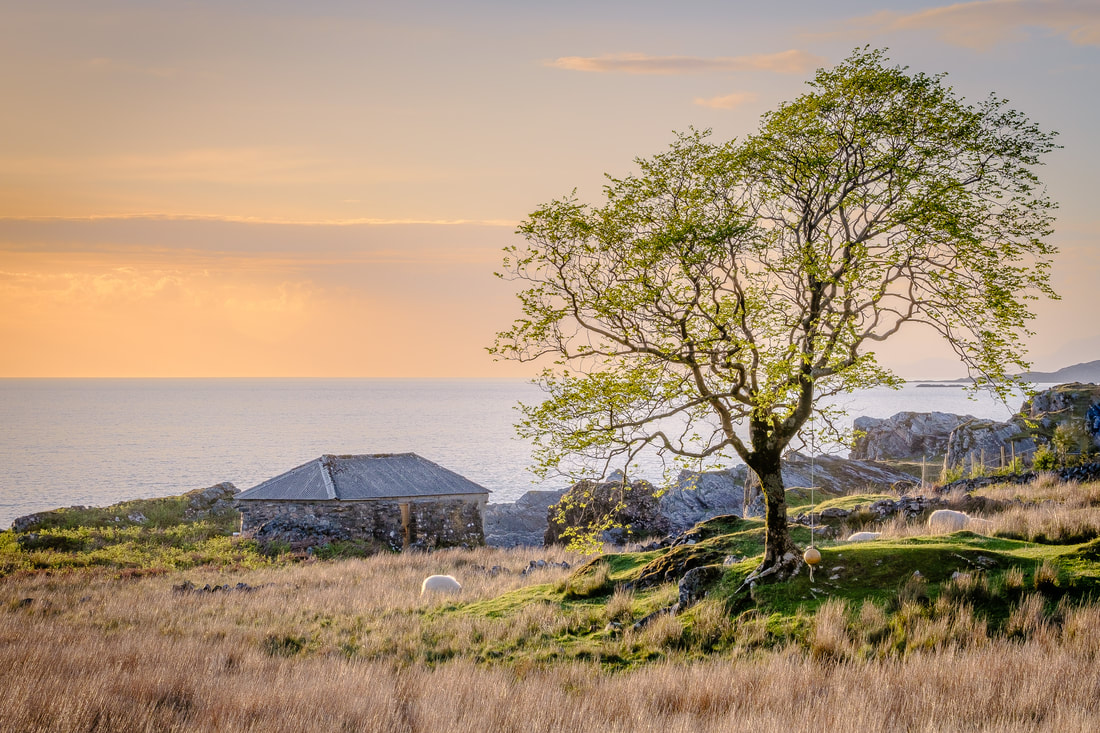|
It’s mid-February and the end of this last month of winter is fast approaching. The evenings are getting lighter and my thoughts are turning to Spring and the sense of renewal, hope and happiness that it brings. The image below was taken out at Smirisary, an old crofting village about two miles to the west of Glenuig, on a Spring evening and shows a tree adorned with the fresh green growth that encapsulates these “Spring” feelings for me. It was a beautiful evening and I felt a true sense of calm contentment as I sat there listening to the call of a nearby cuckoo while waiting for the right moment to press the shutter button. I was left thinking that it is little wonder that the benefits of photography on mental wellbeing have been well studied and documented. I spent much of my childhood outdoors exploring the rolling Scottish Borders countryside and have many fond memories of the adventures that this entailed. Back then, I’m sure I never gave much thought to the benefits of time outdoors and it wasn’t until I moved to Glasgow for work that I started to appreciate how differently I felt when I was in the countryside. Day trips for a walk in the hills became a welcome relief from both the pace of city centre living and the pressures of my work. A camera always accompanied me and, as the years passed, photography became a bigger and bigger part of the experience, acting as my “mind medicine”, encouraging me to slow down, look carefully and really appreciate my surroundings.
Studies by researchers at Lancaster University into the effects of photography on mental wellbeing back this up. They found that the act of finding a subject, trying different compositions and changing positions to alter the light requires such focus that it can be a meditative task, or an act of mindfulness that allows you to focus not on your outside concerns, but solely on the moment and the task at hand. I find this with landscape photography because it requires a great deal of patience to sit on a hillside, having framed a composition and wait for the right light and the perfect moment to press the shutter button. During this time, nothing else is on my mind and I feel completely detached from any stresses and pressures that life might hold. Photography can also provide an artistic outlet, which many people may not have through any other means, and other studies have found that immersing yourself in a creative activity elevates mood while lowering both anxiety and stress hormone levels. Additionally, there are the general physical benefits of going for a walk with a camera, with the desire to capture images translating into the motivation to get outdoors at times when you would otherwise remain at home. Finally, please do not think that landscape photography is limited to people with lots of expensive equipment. You will probably have a perfectly capable camera in your pocket because the quality of smartphone cameras nowadays allows almost anyone to capture some good images. So why don’t you get out into the beautiful landscape that surrounds us here on the Peninsula and try it out. With the sun still low enough in the sky to give us some lovely light, it is the perfect time of year to start. Get out there, take some pictures and feel all the better for it.
4 Comments
|
AuthorHi, Archives
March 2024
Categories
All
|


